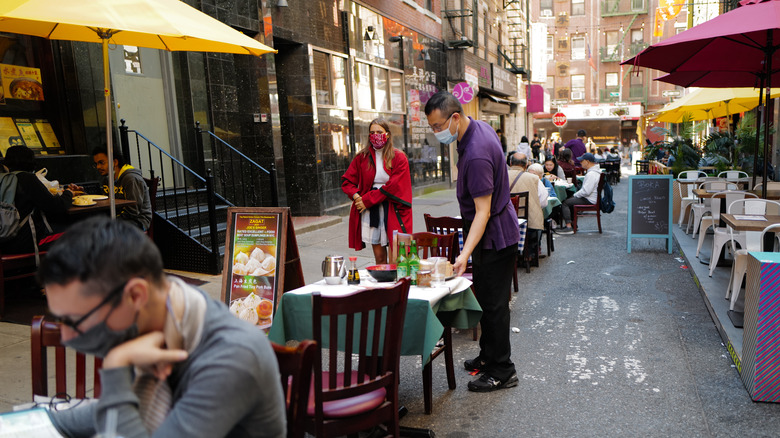Report Shows NYC's Open Streets Project Aided The Restaurant Industry
The restaurant industry took a hit with the onset of the COVID-19 pandemic. Many places were forced to shift to a takeout only model as in-person dining was restricted or forbidden in many areas. Some restaurants were unable to recover, and ultimately had to shut their doors for good – Fortune reports that as many as 110,000 restaurants and bars closed in 2020 alone. Fortunately, New York City's Open Streets program was able to help some restaurants in the city.
The program was launched in July 2020 and provided a space for visitors to sit and enjoy foods from their favorite restaurants while still maintaining a safe distance from others: Restaurants could still serve patrons in open-air dining areas, as streets were closed to cars in order to make room for dining table sets.
Now, a report shows just how well this program was able to help keep restaurants in business, despite lost sales due to the pandemic.
The program helped keep restaurants afloat
A report from the New York Department of Transportation shows that the city's Open Streets project did exactly what it hoped it would do. Restaurants located on open streets corridors were compared to nearby "control" corridors, and they were able to outperform their more traditionally-operating counterparts. The participating restaurants saw an uptick in sales growth, and this positive trend applied to both new and preexisting restaurants in the program.
Restaurants that offered outdoor dining to customers during the Open Streets program were more likely to stay in business during the pandemic, according to the report. Although locations outside the program may have still succeeded, Open Streets restaurants saw higher profits. The streets also saw faster growth in the number of new restaurants and bars — this altered dining model allowed for new locations to attract new customers. The report states that Open Streets saw 10% growth of new businesses, while nearby streets in the same borough saw a 20% reduction.

